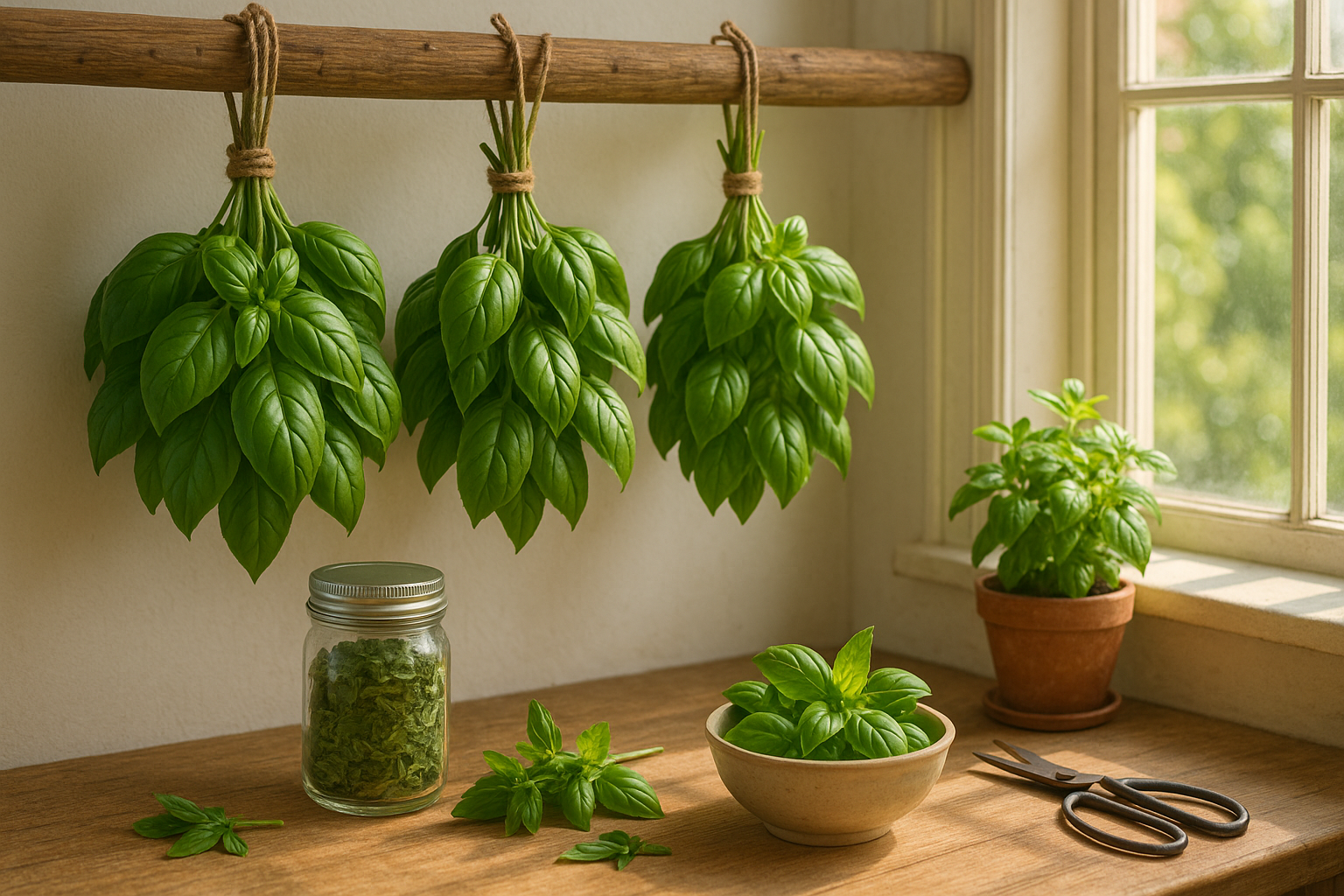Why Dry Basil for Long-Term Storage?
Drying basil is a fantastic way to capture the essence of your garden and enjoy its bright, aromatic flavor throughout the year. While fresh basil can wilt and spoil within days, especially in the fridge, dried basil can last for months—sometimes even up to a year when stored properly in an airtight container away from direct sunlight.
This extended shelf life means you’re always ready to add a dash of herby goodness to pasta sauces, soups, or roasted vegetables, even in the middle of winter when fresh herbs are scarce or expensive. Dried basil is also incredibly versatile: it blends easily into spice mixes, marinades, and dressings, giving your dishes a flavor boost without the hassle of washing and chopping fresh leaves.
Beyond convenience, drying basil is a smart way to save money and reduce food waste. Instead of letting bunches of basil from your garden or grocery store go bad, you can preserve their flavor and use them at your own pace. Drying herbs at home is simple—hang them in bundles or use a dehydrator—and ensures you’re making the most of what you grow or buy, supporting a more sustainable kitchen routine.
Harvesting Basil for Optimal Drying
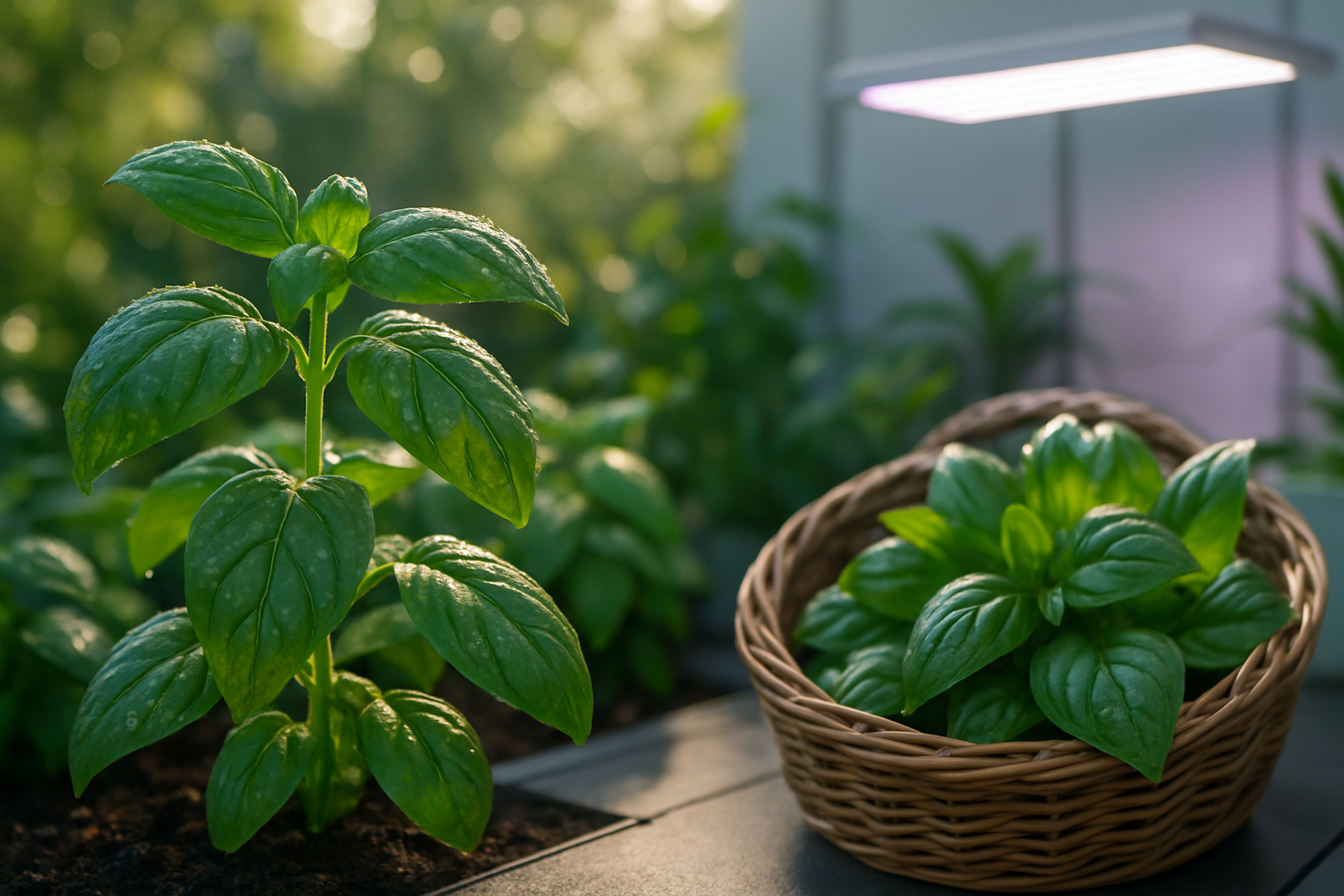
For the most aromatic basil, aim to harvest in the morning after the dew has dried but before the sun gets too strong—that’s when the essential oils that give basil its flavor are most concentrated. Choose sturdy, unblemished stems, and snip just above a pair of leaves to encourage the plant to keep growing.
Avoid harvesting more than a third of the plant at once; this helps your basil continue thriving all season. Inspect leaves closely and skip any with brown spots or holes, as these might bring unwanted flavors or pests.
After harvesting, gently rinse the leaves in cool water to remove dirt or insects, then pat them dry using a clean towel or a salad spinner—excess moisture can cause mold during drying. Spread the leaves in a single layer on paper towels or a clean kitchen cloth, letting them air dry completely before moving on to your preferred drying method.
By following these steps, you’ll lock in that bright, unmistakable basil taste to enjoy long after fresh bunches are gone.
Different Methods to Dry Basil
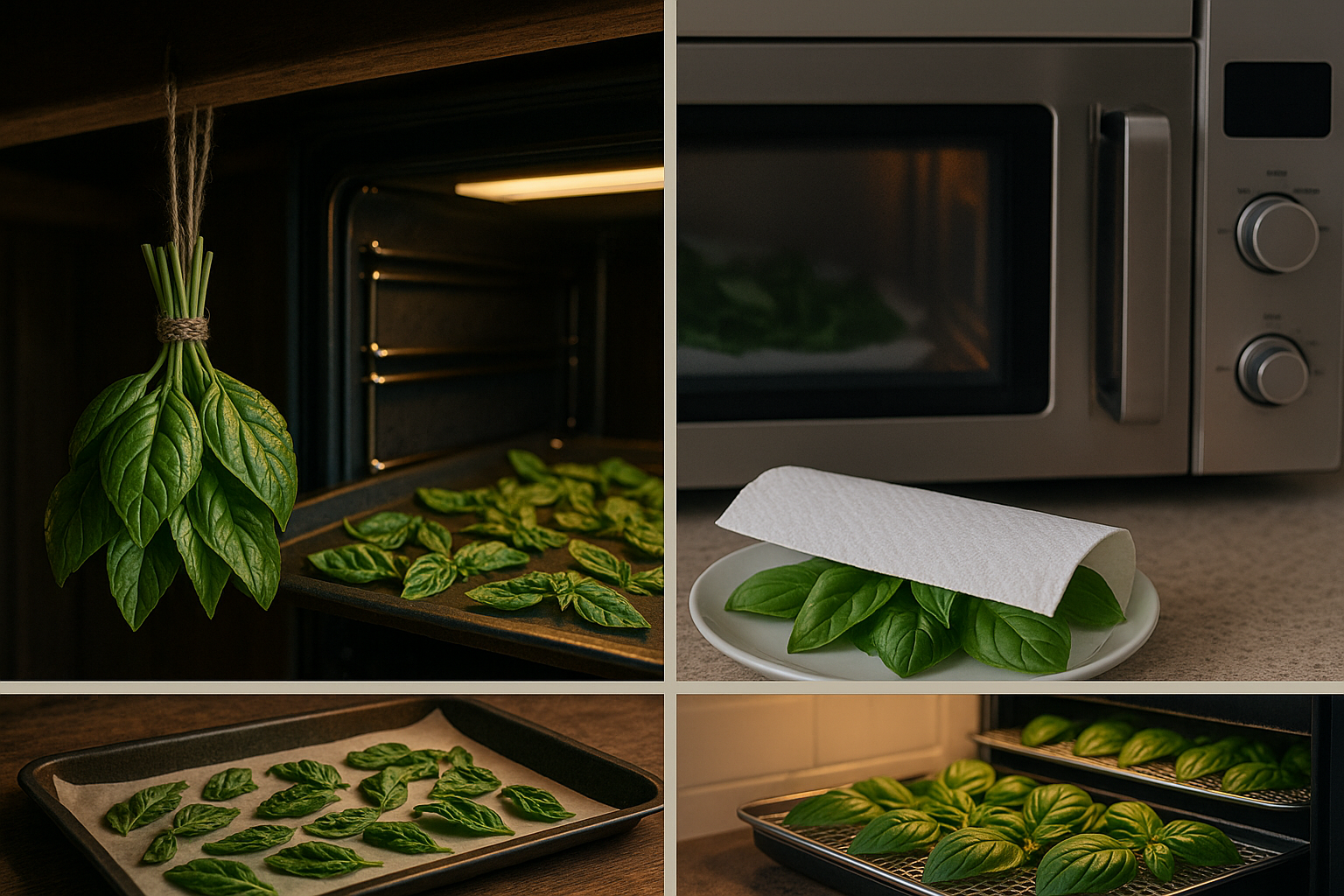
When it comes to drying basil, you have several methods to choose from, each offering its own blend of speed, convenience, and impact on flavor and color.
Air drying is the most traditional option and is excellent for preserving flavor, though it takes the longest—usually a week or more—and works best in dry, well-ventilated areas. Simply tie clean basil stems in loose bunches, hang them upside down in a dark, airy spot, and check every few days until the leaves are crisp.
For a faster approach, oven drying is straightforward: place basil leaves in a single layer on a baking sheet, set your oven to its lowest temperature (usually around 170°F/75°C), and prop the door open slightly to let moisture escape. Flip the leaves every 20 minutes, and you should have dry basil in about 1-2 hours. Oven drying is efficient but can slightly dull the herb’s color and aroma if overdone.
For even speedier results, a microwave can dry basil in minutes—just place leaves between two paper towels and heat in short bursts until dry. However, this method risks uneven drying and a loss of some natural oils that give the herb its signature flavor.
Food dehydrators offer the greatest control and preserve color well but require extra equipment and prep time. Simply lay the leaves in a single layer on dehydrator trays and dry at 95°F-115°F (35°C-45°C) for 12-24 hours.
Recently, air fryers have become a trendy option by circulating hot air for quick drying. However, because of their intense heat, they often sacrifice basil’s vibrant color and delicate flavor.
In summary, if flavor and color matter most, go with air drying or a dehydrator. But if you need basil in a hurry, opt for the oven or microwave.
Storing Dried Basil Properly
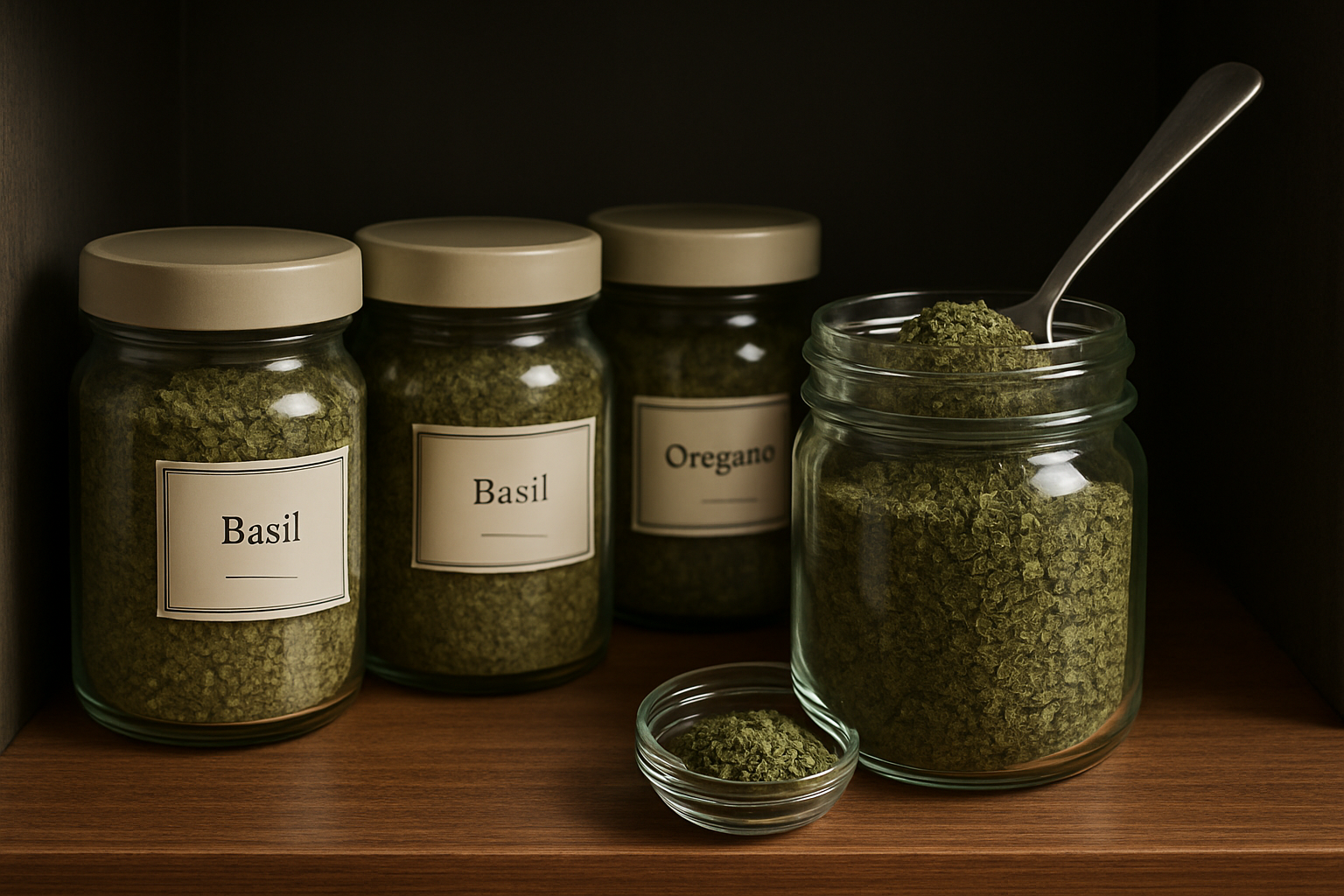
Properly storing dried basil is essential to preserving its vibrant flavor and aroma for as long as possible. Before packing it away, make sure your basil leaves are thoroughly dried—any hint of moisture can lead to mold or spoilage. To test, crumble a leaf between your fingers; it should snap easily, not feel soft or bendy.
When it’s time to store, choose airtight containers like glass jars or metal tins, as these create a solid barrier against humidity. Place the containers in a cool, dark, and dry pantry or cupboard—a spot away from the stove, sunlight, or dishwasher steam is ideal.
To avoid confusion, especially if you dry herbs in batches, label each container with the herb’s name and the date you stored it. Each time you open the jar, check for signs of moisture, color fading, or musty odors—these are red flags that your basil may be going bad. If you notice any clumping, wet spots, or off smells, it’s time to toss and replace the basil.
Try not to open the jar too often, and always use clean, dry measuring spoons to keep moisture out. By following these hands-on tips, your dried basil can stay fresh and flavorful for up to a year, ready to elevate your cooking at a moment’s notice.
How Long Does Dried Basil Last?
Dried basil typically stays fresh and flavorful for about one to three years when stored properly in an airtight container away from heat, light, and moisture. However, several factors can affect its shelf life, including storage conditions and the original quality of the herb.
You’ll know your dried basil is past its prime if the leaves appear dull, brownish, or have lost their vibrant green color. Another tell-tale sign is a weak, musty aroma—fresh dried basil should smell sweet and peppery. If the taste has faded or turned bland, it’s a good indication it’s time to replace the jar.
To extend its usability, try gently crushing the leaves between your fingers to release any remaining essential oils before adding them to dishes—this can sometimes revive a bit more flavor. If your jar of basil is nearing the end of its shelf life, use it more generously in sauces, soups, and marinades, or infuse it into olive oil for dressings.
Remember, even faded basil is better than none for adding a subtle herbal note to your meals, but for the brightest taste, replace it regularly.
Creative Ways to Use Dried Basil
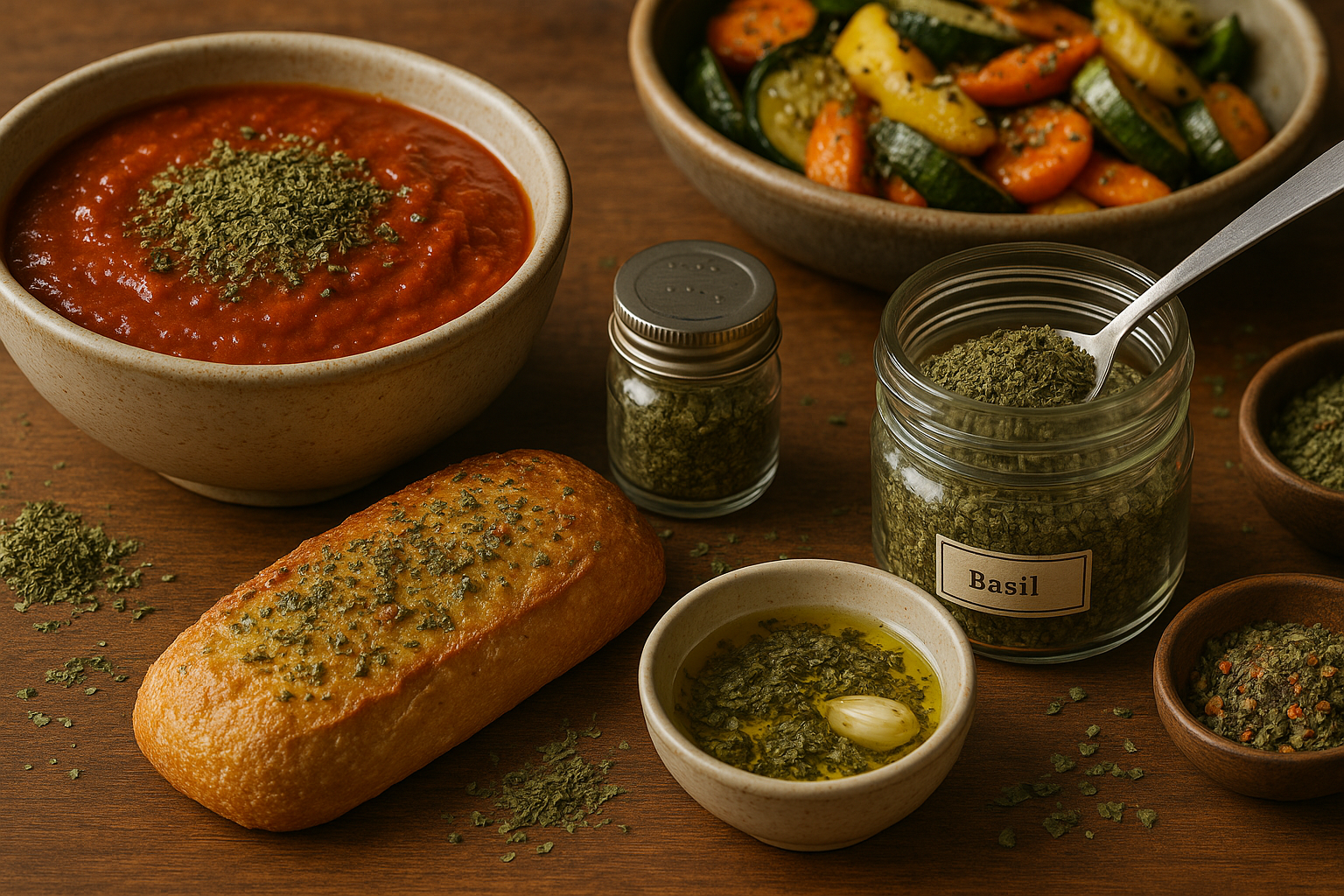
Dried basil is a versatile staple that can elevate countless dishes beyond the usual marinara sauces and tomato soups. Sprinkle it into homemade pizza sauce for a boost of earthy flavor, or stir it into creamy soups like potato or chicken noodle for an herby twist.
Mix dried basil with olive oil and garlic, then brush it over grilled veggies or bread for instant Mediterranean flair. For a simple rub, combine dried basil with garlic powder, crushed red pepper, and black pepper—perfect for chicken, fish, or tofu.
DIY herb blends are another creative use; an Italian seasoning mix can be made by blending dried basil with oregano, thyme, rosemary, and a pinch of sage. Want to enhance everyday dishes? Try an herbed salt by mixing dried basil with kosher salt, granulated garlic, and lemon zest—this seasoning is delicious on roasted potatoes or popcorn.
When making your own herb blends, store them in airtight containers in a cool, dark place to keep the flavors fresh. Label each blend with the date and try to use them within three to six months, as dried basil can lose its potency over time.
With a little creativity, this humble herb can add depth and interest to everything from roasted vegetables to homemade crackers, making it a must-have in any kitchen pantry.
Troubleshooting and FAQ
Even with the best intentions, drying basil at home can come with a few bumps along the way. If your basil turns brown, it’s likely due to drying it too quickly or exposing it to direct sunlight. Try moving your leaves to a shadier spot or lowering the heat if you’re using an oven or dehydrator.
Basil can also lose its punchy flavor if it’s over-dried or stored in warm, humid conditions. Make sure the leaves are crisp but not brittle, then store them in a cool, airtight container.
Mold is a common problem, especially if your leaves still feel pliable after drying. If you spot any fuzziness, toss those leaves—safety first. Hanging basil with stems can help promote airflow and prevent mold, but be sure to strip off thicker stems that hold extra moisture.
If you want to dry basil with other herbs, stick with ones that have a similar texture like oregano or thyme to ensure even drying. Softer herbs can dry too fast and crumble.
For drying other garden favorites like rosemary, parsley, or mint, plenty of guides are available from university extension websites or trusted gardening blogs. Just remember, each herb has its own quirks, so a little extra research can go a long way.
